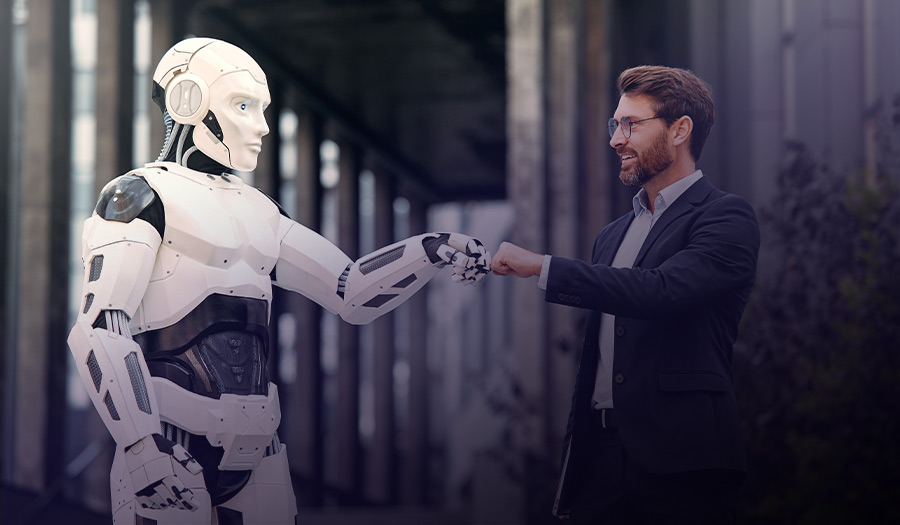Customer Experience in Utilities
Customer experience (CX) has evolved into a critical driver of success across various industries, including utilities and public services.
The relationship between citizens and their governments is evolving rapidly, shaped by both technological advancements and changing societal expectations.
In an era where convenience, speed, and personalization define customer interactions, public services are no longer immune to these rising standards. Citizens increasingly demand that their interactions with public institutions reflect the same user-friendly, accessible, and efficient experiences they encounter with leading private-sector brands. This shift has made customer experience (CX) a critical focus for public sector organizations, as they seek to improve the quality, accessibility, and overall satisfaction of public service delivery.
The impact of poor service delivery in the public sector can be severe. Delays, complicated processes, and inaccessible communication channels often result in frustration, mistrust, and disengagement from public services. This lack of confidence in public institutions can have far-reaching consequences, from decreased compliance with government programs to diminished civic engagement. Conversely, a citizen-centric approach, where governments prioritize the experience and satisfaction of those they serve, fosters greater trust, transparency, and cooperation. By focusing on CX, governments can create systems that not only meet the functional needs of citizens but also build stronger, more engaged communities.
Improving service delivery through a better customer experience is not merely about optimizing processes or digitizing services; it involves rethinking the entire relationship between government and citizens. A well-executed CX strategy in public services offers the potential to significantly improve the quality of life for citizens, reduce operational inefficiencies, and strengthen the relationship between governments and the public. As we move deeper into the digital age, the alignment of technology, data, and human-centered design principles becomes essential for creating public services that are seamless, responsive, and personalized.
This essay will explore how governments at the central and local levels, as well as multi-line business groups, can enhance service delivery by adopting best practices from the private sector. By leveraging technology, refining operating models, and focusing on citizen personas, governments can revolutionize public services to meet modern expectations. Through real-life examples and documented successes from countries like Estonia, Singapore, and the UK, we will examine how customer experience improvements in public services drive trust, transparency, and efficiency.
Public services play a foundational role in the well-being of a society, encompassing essential functions such as healthcare, education, social welfare, transportation, and security. Historically, these services were delivered through rigid, process-driven bureaucratic frameworks, often with little regard for the end-user’s experience. However, the global shift toward customer-centric service models has fundamentally altered the way citizens interact with their governments. Improving customer experience in public services is now seen as not only a matter of citizen satisfaction but as a strategic tool to enhance trust, transparency, and efficiency within the public sector.
One of the most significant challenges in public services is the inherent complexity of delivering services to a diverse population with varying needs. Governments must provide equitable services to millions, often with limited resources and outdated infrastructures. A customer-centric approach allows public institutions to streamline processes, making services more efficient while ensuring that they are accessible and responsive to citizen needs. When implemented correctly, CX improvements can significantly reduce the friction associated with public services, leading to more satisfied citizens, fewer complaints, and more effective policy outcomes.
Estonia serves as a prime example of how improving customer experience in public services can drive transformational change. The country has been recognized globally for its innovative digital government services, where 99% of all public services are accessible online. Estonian citizens can complete nearly all interactions with the government—from filing taxes to voting—through a single, user-friendly digital platform. This citizen-centric digital transformation has enhanced transparency, reduced wait times, and increased citizen participation in governance. Estonia’s success demonstrates how improving CX can transform service delivery, making it more responsive, efficient, and accessible.
Similarly, Singapore’s Smart Nation initiative has revolutionized public services through the use of data and technology. By leveraging real-time data and artificial intelligence, Singapore’s government has optimized public service delivery, improving everything from transportation systems to healthcare access. For example, real-time traffic data enables more effective public transportation planning, ensuring that citizens experience fewer delays and more reliable services. This approach exemplifies the potential for technology to enhance the customer experience in public services, creating systems that are not only more efficient but also better aligned with the needs and expectations of citizens.
Effective customer experience management in public services requires identifying and optimizing key touchpoints where citizens interact with government agencies. These touchpoints, which represent critical moments in the customer journey, determine the overall perception and satisfaction of the services provided. From accessing healthcare and education to applying for permits or social benefits, public service touchpoints are varied and often involve complex processes. Governments must carefully assess each of these points to understand where improvements can be made to enhance the customer experience.
Healthcare is one such touchpoint where the quality of the customer experience can have life-altering consequences. In many countries, patients often face long wait times, convoluted administrative processes, and difficulty in accessing care. The UK's National Health Service (NHS) has made strides in improving the patient experience by introducing online booking systems, digital health records, and remote consultations. These innovations reduce the burden on physical healthcare facilities while ensuring that patients receive timely care. As a result, patient satisfaction has improved, and the overall efficiency of healthcare delivery has increased.
Public safety and law enforcement are other crucial touchpoints in public services where CX can be optimized to build trust and responsiveness. The city of New York’s 311 system offers a mobile app that allows residents to report non-emergency issues such as potholes or noise complaints. By providing real-time updates on the status of their requests, the city has significantly improved its responsiveness and transparency. This system has not only empowered citizens to engage more directly with local government but also strengthened the perception that the government is accountable and responsive.
Education is another critical touchpoint in public service delivery. Access to information and administrative services related to education—such as school admissions, financial aid applications, and student records—can often be fraught with delays and confusion. In response, governments are increasingly adopting digital platforms to streamline these processes. For instance, the Singapore Ministry of Education’s online portal allows parents to register their children for school, check their academic progress, and access support services. This centralized approach simplifies the process for parents and ensures that students receive the support they need without bureaucratic delays.
Governments seeking to improve CX in public services can adopt several best practices from both the public and private sectors. The integration of digital platforms is one of the most effective ways to enhance accessibility, reduce inefficiencies, and streamline service delivery. Digital transformation initiatives, like Estonia’s e-government model, demonstrate the power of leveraging technology to meet the needs of citizens. By providing online services that are accessible 24/7, governments can reduce the reliance on physical service centers, lower costs, and make services more user-friendly.
Another best practice is the use of data analytics to identify citizen needs and improve service design. Singapore’s Smart Nation initiative exemplifies how governments can use real-time data to optimize service delivery and predict future needs. By analyzing traffic patterns, healthcare data, and other citizen interactions, the Singaporean government ensures that public services are not only responsive but also proactive in addressing potential issues before they arise. Data-driven decision-making allows governments to allocate resources more effectively and deliver services that are closely aligned with citizen expectations.
Multi-channel service delivery is another essential best practice for improving CX in public services. Governments should provide citizens with multiple ways to access services—whether online, in person, via mobile apps, or through call centers. The UK’s GOV.UK platform, which centralizes all government services into a single digital portal, is an excellent example of how a multi-channel approach can simplify the citizen journey. By offering multiple access points, citizens can choose the method that best suits their needs, increasing satisfaction and reducing barriers to service.
Finally, governments should actively seek feedback from citizens to understand their experiences and identify areas for improvement. New Zealand’s real-time feedback system for social services is an innovative approach to gathering citizen input, enabling the government to make adjustments in real-time and address issues as they arise. This feedback loop not only helps improve the quality of service delivery but also demonstrates to citizens that their voices are heard and valued.
Defining personas and understanding citizen expectations
For governments to deliver exceptional customer experiences, it is crucial to understand the diverse needs of the populations they serve. Defining citizen personas is an effective way to segment the population based on demographic, socioeconomic, and behavioral factors. These personas help governments tailor services to meet the specific needs of different groups, ensuring that public services are equitable and accessible.
For example, elderly citizens may prefer in-person interactions or phone support due to lower digital literacy, while younger, tech-savvy individuals may expect digital solutions that allow them to interact with public services from their smartphones. Understanding these differences allows governments to design multi-channel service offerings that cater to all citizens. This personalized approach helps ensure that public services are not only efficient but also inclusive, meeting the needs of vulnerable or marginalized groups.
In B2B contexts, where governments interact with businesses or other public entities, defining buyer personas is also essential. For instance, large corporations may require different levels of support and regulatory compliance compared to small businesses. Governments that can anticipate and address these unique needs will build stronger relationships with their stakeholders, ensuring more effective public service delivery.
The strategic relevance of target operating models in public services
A well-structured Target Operating Model (TOM) is essential for aligning customer experience improvements with public service delivery goals. A TOM defines how resources, processes, and technology are organized to deliver services effectively, ensuring that operations are aligned with the strategic objectives of improving CX. For public services, a TOM must be flexible enough to accommodate the diverse needs of citizens while also being efficient and scalable.
Canada’s government provides a relevant example of how a redesigned TOM can transform public service delivery. By restructuring their service delivery framework and integrating digital platforms, the Canadian government reduced processing times for key services such as social benefits and immigration applications. This new operating model improved both the efficiency and the customer experience, reducing frustration and increasing trust in public institutions.
Measuring and enhancing customer experience in public services
To ensure that improvements in CX are having the desired impact, governments must establish clear metrics for measuring success. Common metrics include citizen satisfaction surveys, Net Promoter Score (NPS), and service efficiency indicators such as processing times and digital engagement rates. Singapore regularly conducts citizen satisfaction surveys to assess the effectiveness of its Smart Nation initiative, using this data to refine services and address any pain points that citizens may encounter.
Technology also plays a critical role in measuring CX in real-time. By collecting and analyzing feedback as citizens interact with public services, governments can quickly identify areas for improvement and respond to issues before they escalate. New Zealand’s real-time feedback system for social services is an excellent example of how technology can be used to enhance CX. The system allows citizens to rate their experience immediately after receiving services, providing valuable insights into how public services can be improved.
Conclusion
Today, governments can no longer afford to overlook the importance of customer experience in public service delivery. Citizens expect more from their interactions with public institutions, and those governments that fail to meet these expectations risk eroding trust, reducing civic engagement, and increasing dissatisfaction. However, as this essay has demonstrated, by adopting a customer-centric approach, governments can significantly enhance the efficiency, accessibility, and responsiveness of public services, thereby fostering greater trust and engagement.
Improving service delivery through better customer experience is not just about technology or efficiency—it is about creating a deeper connection between governments and the citizens they serve. As evidenced by real-world examples from countries like Estonia, Singapore, and the UK, governments that prioritize CX are better positioned to meet the needs of their populations while improving operational effectiveness. By focusing on key touchpoints, defining citizen personas, and implementing well-designed Target Operating Models, governments can transform public services into systems that are seamless, accessible, and citizen-centric.
Looking forward, the future of public services will be defined by how well governments can adapt to the changing needs and expectations of their citizens. By leveraging digital platforms, utilizing data-driven decision-making, and embracing a multi-channel approach to service delivery, governments can create public services that are not only more efficient but also more equitable and responsive. The lessons learned from private-sector CX practices can provide valuable insights for public institutions seeking to improve their service delivery and build stronger, more engaged communities.
Documentary References:

Customer experience (CX) has evolved into a critical driver of success across various industries, including utilities and public services.

Digital Transformation (DT) is no longer just a buzzword but a strategic imperative for enterprises operating in an increasingly interconnected,...

“The best way to predict the future is to create it.” – Peter Drucker